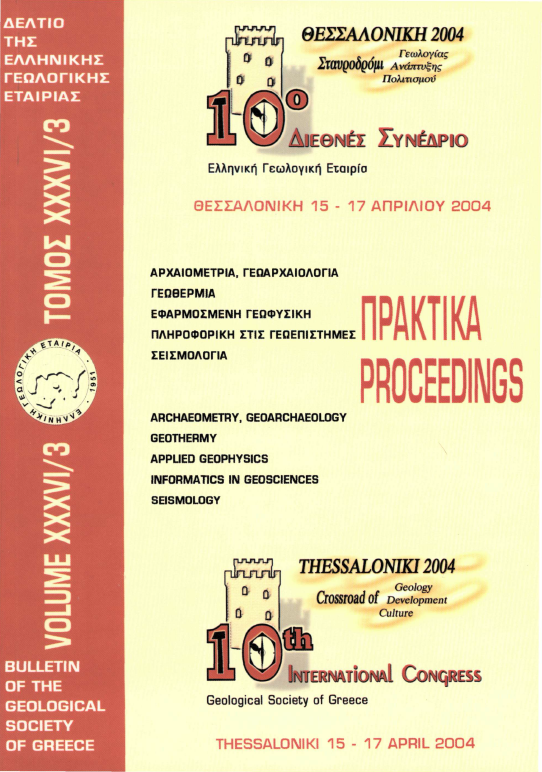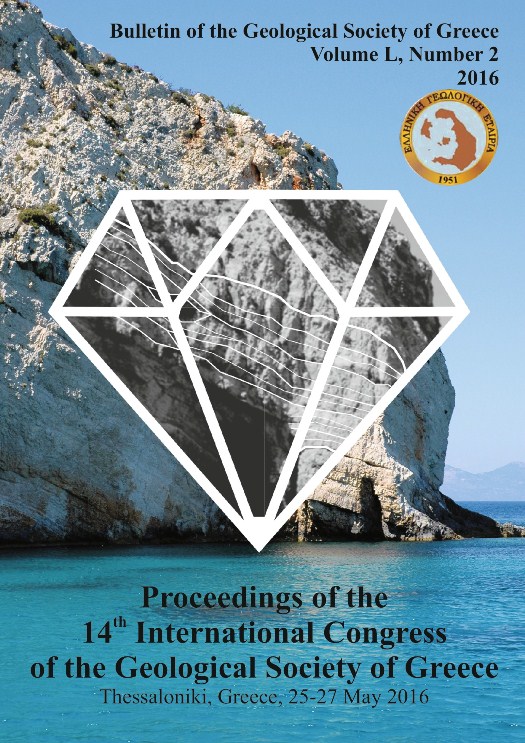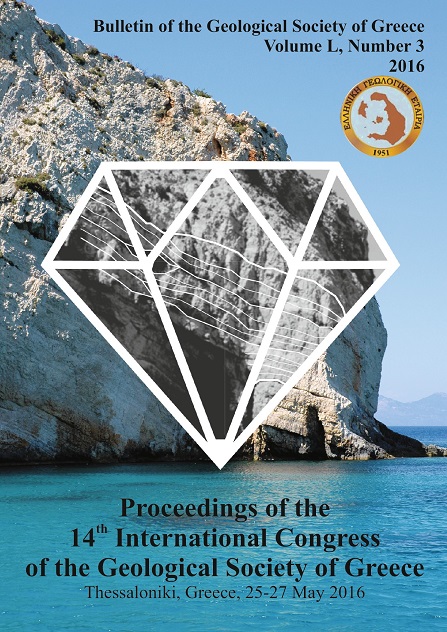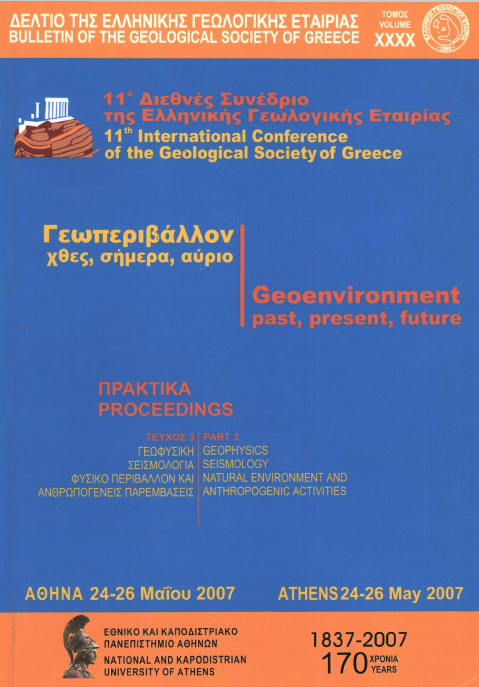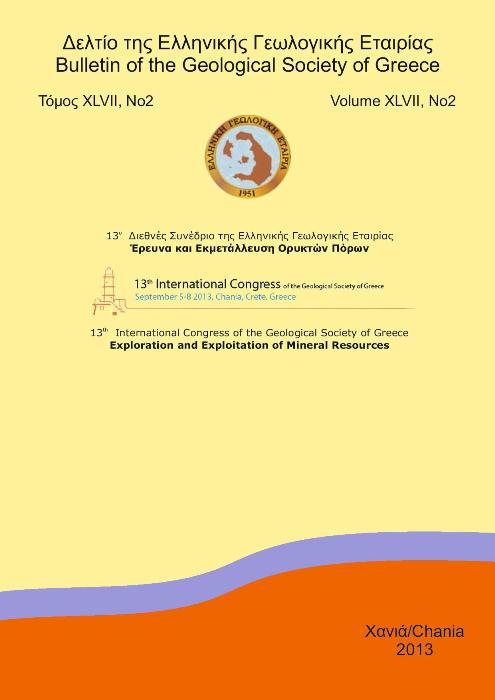THE PSACHNA (EVIA ISLAND) EARTHQUAKE SWARM OF JUNE 2003
Περίληψη
Evia Island (Greece) lies in a transition zone from strike-slip faulting in the east, due to the strands of the North Anatolian Fault (NAF) that enter to the Aegean Sea, to normal faulting in the west along central Greece. In June 2003 a series of moderate events occurred in central Evia whose source parameters are investigated. These earthquakes caused serious damage to almost 20 residencies mainly in the town of Psachna. The sequence could be identified as an earthquake swarm with earthquake magnitudes in the range of 3 < M < 4.9. We used the Ρ and S arrivals at the stations of the National Seismic Network to relocate the events using the double-difference algorithm. All Ρ and S phase pickings were made by us using the broad band records from the network operated by the Geodynamic Institute of Athens. The relocated epicenters define a pronounced ENE- WSW zone, parallel to the high topography of the area. All depths are shallow from 1 to 8 Km. Regional waveform modeling was applied to determine the focal mechanisms of the larger events and FPFIT for the focal mechanisms of the smaller magnitude events. The majority of the focal mechanisms indicate normal faulting along almost E-W striking planes suggesting that deformation is mainly taken by normal faulting with a minor dextral horizontal motion. Normal faults with a N-S strike have been also observed showing that the E-W extension is present as it is observed in other parts of the Aegean region. Evia Island and its pattern of deformation is very interesting from the seismotectonic point of view. The fact that no large magnitude earthquake has occurred in Evia Island during instrumental times, makes the study of this earthquake swarm important. Previous work (Kiratzi, 2002) has shown that the deformation in northern Evia Island is taken up mainly by strike-slip faulting. Moreover, depending on the orientation of the activated faults in respect to the present state stress field, dextral or sinistral horizontal motion is observed. The Psachna earthquakes showed that an almost N-S extensional field prevails in central Evia Island with a few strikeslip focal mechanisms, suggesting that this part is mostly affected by the normal faulting system of central Greece.
Λεπτομέρειες άρθρου
- Πώς να δημιουργήσετε Αναφορές
-
Benetatos, C., Kiratzi, A., Kementzetzidou, K., Roumelioti, Z., Karakaisis, G., Scordilis, E., Latoussakis, I., & Drakatos, G. (2004). THE PSACHNA (EVIA ISLAND) EARTHQUAKE SWARM OF JUNE 2003. Δελτίο της Ελληνικής Γεωλογικής Εταιρείας, 36(3), 1379–1388. https://doi.org/10.12681/bgsg.16504
- Ενότητα
- Σεισμολογία

Αυτή η εργασία είναι αδειοδοτημένη υπό το CC Αναφορά Δημιουργού – Μη Εμπορική Χρήση 4.0.
Οι συγγραφείς θα πρέπει να είναι σύμφωνοι με τα παρακάτω: Οι συγγραφείς των άρθρων που δημοσιεύονται στο περιοδικό διατηρούν τα δικαιώματα πνευματικής ιδιοκτησίας επί των άρθρων τους, δίνοντας στο περιοδικό το δικαίωμα της πρώτης δημοσίευσης. Άρθρα που δημοσιεύονται στο περιοδικό διατίθενται με άδεια Creative Commons 4.0 Non Commercial και σύμφωνα με την οποία μπορούν να χρησιμοποιούνται ελεύθερα, με αναφορά στο/στη συγγραφέα και στην πρώτη δημοσίευση για μη κερδοσκοπικούς σκοπούς. Οι συγγραφείς μπορούν να: Μοιραστούν — αντιγράψουν και αναδιανέμουν το υλικό με κάθε μέσο και τρόπο, Προσαρμόσουν — αναμείξουν, τροποποιήσουν και δημιουργήσουν πάνω στο υλικό.

